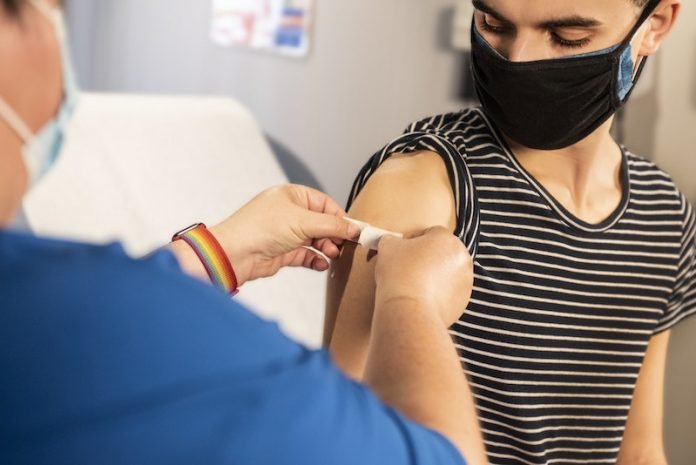
The Omicron variant currently represents 3-13% of new COVID-19 infections in the U.S.
It appears to be much more contagious than the Delta variant. COVID-19 vaccination is more important than ever.
The American Heart Association continues to align with expert guidance from the U.S. Centers for Disease Control and Prevention (CDC), the nation’s infectious disease experts, regarding COVID-19 vaccines and boosters.
Last Thursday, the CDC recommended the mRNA COVID-19 vaccines as the preferred vaccines for most adults.
The two-dose mRNA vaccines, produced by Pfizer-BioNTech or Moderna, are preferred rather than the single-dose, adenovirus-vector vaccine from Johnson & Johnson (Janssen).
The new recommendation is in response to recent data indicating an increased risk of a rare condition called thrombosis with thrombocytopenia syndrome (TTS; also known as vaccine induced thrombocytopenia with thrombosis, or VITT) after receiving the Johnson & Johnson COVID-19 vaccine.
TTS is the combination of low blood platelet count (thrombocytopenia) and thrombosis.
One type of thrombosis associated with TTS is cerebral venous sinus thrombosis (CVST), which refers to blood clots in the brain’s veins – not in the arteries, as is the case for most strokes.
CVST is a rare but serious type of stroke caused by a blood clot in a part of the brain known as the venous sinus, involving veins that carry blood away from the brain.
CVST clot symptoms are very similar to several other neurological conditions, and the symptoms may include:
- severe headache;
- blurry vision;
- fainting or loss of consciousness;
- weakness;
- sensory changes;
- confusion or trouble speaking;
- nausea and vomiting; or
- seizures.
CVST occurs in the veins of the brain. In addition to CVST, other types of thrombosis associated with TTS include clotting in the veins of the legs (deep vein thrombosis or DVT), lungs (pulmonary embolism or PE), and abdomen.
Symptoms associated with these other types of thrombosis include abdominal pain, leg pain, difficulty breathing or shortness of breath.
Among the TTS cases reported in the U.S., the most common symptoms were severe headaches; vomiting; back pain; fatigue; weakness or the inability to move one side of the body (hemiparesis); inability to speak or understand speech (aphasia); loss of consciousness; and abdominal pain.
Cases of TTS occurred several days after being vaccinated with the one-dose Johnson & Johnson COVID-19 vaccine.
From March 2 through August 31, 2021, there were 54 cases of hospitalized patients with TTS in the U.S., out of 14.1 million doses of the Johnson & Johnson vaccine administered, representing a case rate of 3.8 cases per million doses.
The 54 documented cases of TTS were adults ages 28-62, the majority of whom were women (37 women vs. 17 men). There are no reports to-date of TTS after receiving the Johnson & Johnson vaccine as a booster dose.
Researchers say that the CDC’s latest data indicate that TTS is a rare, yet serious, possible side effect after receiving the Johnson & Johnson COVID-19 vaccine.
Individuals who receive the Johnson & Johnson COVID-19 vaccine should be monitored for symptoms of TTS and seek immediate treatment.
If you care about COVID, please read studies about when will people need COVID vaccine booster shot, and drug that may prevent respiratory and heart damage in COVID-19.
For more information about health, please see recent studies about new treatments that may stave off the worst effects of the COVID, and results showing that vitamin D can be an inexpensive COVID-19 treatment.



